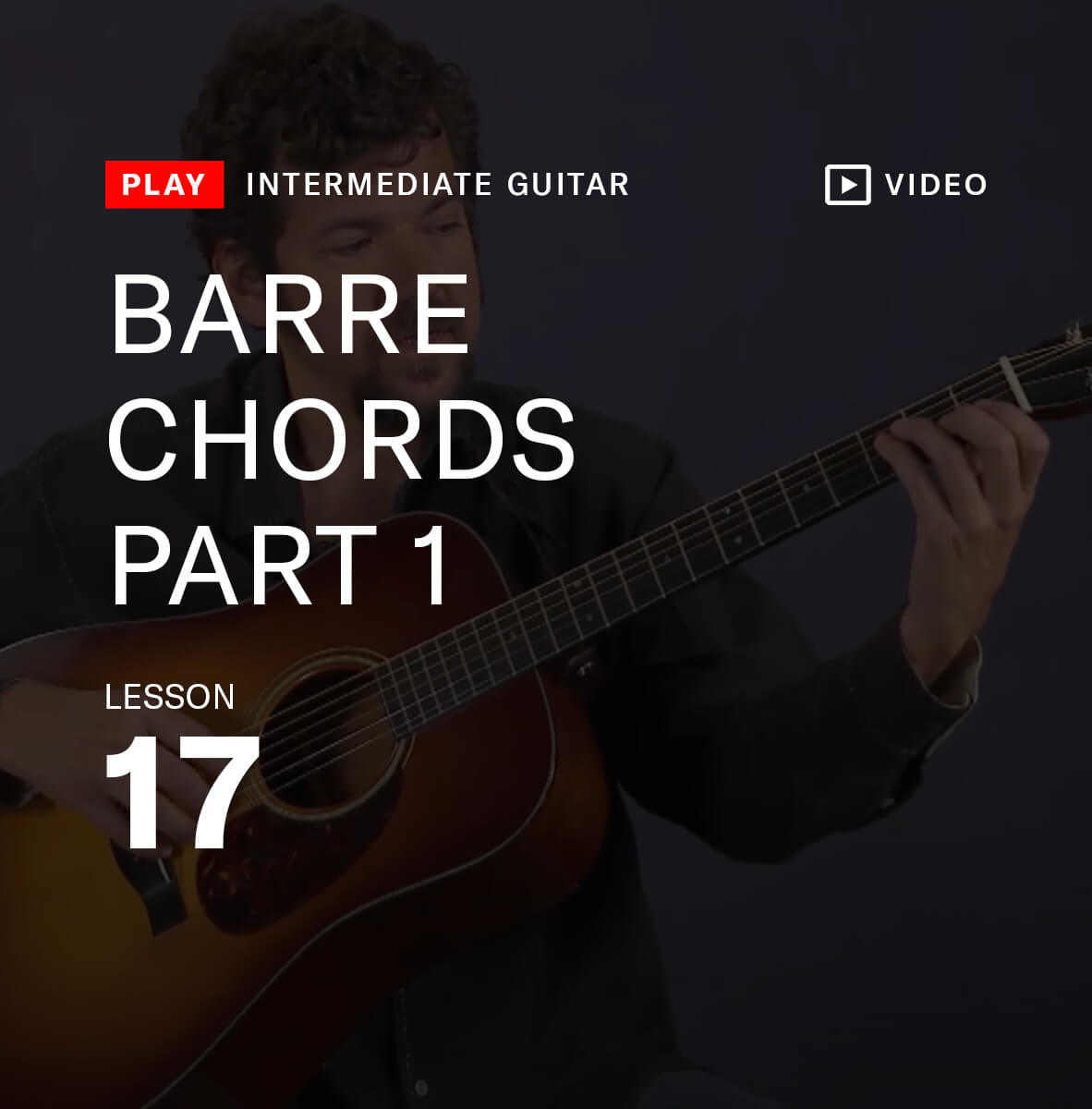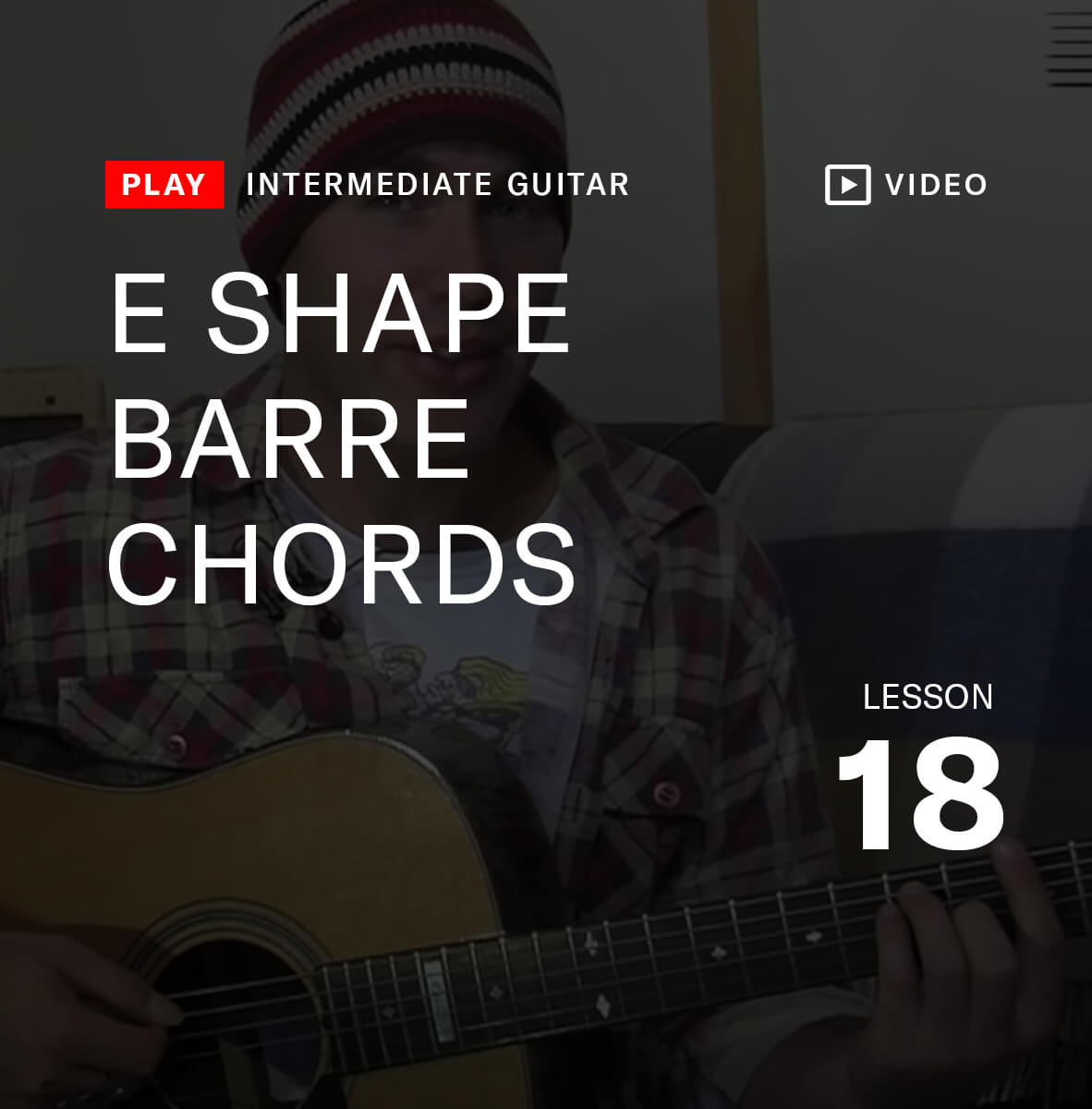Barre chords are a big part of rock and pop songs. By forming these chord shapes and sliding them up and down the neck, you can play any chord.
INTERMEDIATE ACOUSTIC GUITAR LESSON 16:
10 EFFECTIVE PRACTICE TIPS
Denise Gainey

In today's world, we are all busy trying to fit too many things into too few hours each day. For musicians, the issue is finding the time we need daily to progress on our instruments, and without a doubt, focused and productive time in the practice room is much more important than the number of hours spent just playing through music. Here are ten tips to build an effective practice regimen.
1) Have the Right Equipment
Equipment matters! It helps to own a professional quality instrument and mouthpiece, a metronome and tuner (there are several great smartphone apps), a dictionary of musical terms, a folder to organize your music, a notebook devoted solely to your instrument, and a method of recording yourself.
2) Stick to a Regimen
Set aside definite and regular times for practicing, and don’t let anything interfere with those times. Along with that, go into your lessons with a plan of what you want to get accomplished, including both short-term and long-term goals.
3) Lay a Solid Foundation
Work particularly on improving your fundamental skills. True progress won’t be made until the fundamentals are addressed and improved.
4) Work on the Tough Stuff
If you sound good the entire time you are practicing, you are not really practicing! Focus your attention on areas that challenge you instead of always starting at the beginning of a piece of music. My favorite three rules of successful practice: isolate the problem (for example, it may be one interval causing a passage not to work); slow it down...way down; repeat the passage thoughtfully in varied ways, using different rhythms and articulations.
5) Use Your Experience
Always try to transfer knowledge and skills learned from one piece to the next, and look for opportunities to apply new fingerings, tone considerations, improved intonation, etc.
6) Alternate Practice Positions
Practice half of your time while sitting, and half while standing. We practice what we perform, and we perform what we’ve practiced, so it is important to become comfortable playing seated for ensemble playing and standing for solo playing. Notice how your breathing and posture feels in both situations.
7) View Yourself
Use a mirror! My mom used to say, “You never know how you look until you get your picture took.” A silly way of reminding us that we may not realize bad habits developing and perpetuating in the areas of embouchure, hand and body position until we see ourselves play.
8) If You Use Reeds, Break Them In
If you are a reed player, make time daily to work on breaking in new reeds and adjusting others. We are only as good as our weakest reed.
9) Ask Right Away
If you don’t understand a concept, don’t wait until your next lesson to ask your teacher – ask now instead of waiting a week and losing those hours that you could have used to improve. And finally...
10) Ask Right Away
As my mentor Kalmen Opperman used to say, “Practice and hope, but never hope more than you practice.” Wishful thinking alone won’t work – get in the practice room daily using these tips, and watch for great things to come!





